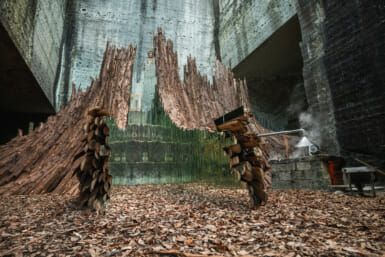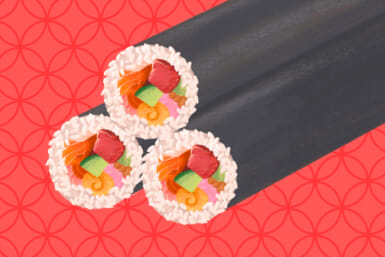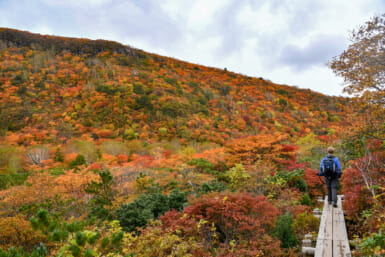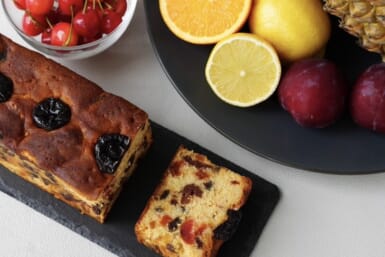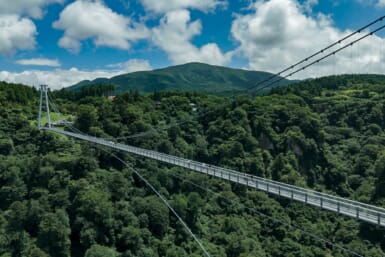Chiba, Tokyo’s neighbor to the east, may have more to offer than you think.
If the first and last thing you know about the prefecture is its Disney resort, Narita Airport or the industrial/commercial complex around Makurari, then it might be time to take a second look; go a little deeper and you will find in Chiba lots to do and see.
The bulk of the prefecture falls on a peninsula that a fair few of us Tokyoites dismiss when getting round to booking that weekend away or even thinking about a day trip out of the city. We might consider Chiba simply a bunch of satellite towns from which to commute to Tokyo but there is, however, good reason to consider heading in the opposite direction and going just a little further.
Get on the Tokyo Bay ferry from near Yokosuka, head off on the train or bus or drive over the Tokyo Bay Aqualine and, as many locals will tell you, you’ll feel further away than you’ve had to travel. Isn’t that the perfect kind of escape?
If you are one of those who has been caught up in the recent boom for outdoor pursuits – or a die hard who’s been getting into the great outdoors since you were a kid – you can’t ignore Chiba. Its hills and forests have trekking and hiking routes through un-spoilt surroundings; road or mountain bikers will find trails that can truly challenge them and local beaches around the 530km of protected coastline aren’t just for relaxing.
Surfing, kayaking, fishing, diving and even paragliding centers exist along the Pacific shore and there are plenty of options for a family day out, with Kamogawa Sea World, the Disney Resort (of course!) and Nokogiri-yama to name a few.
The warm Kuroshio ocean current brushes past the Boso peninsula, bringing an almost tropical feel to areas such as Kamogawa, Chikura and Onjuku, which are noticeably milder than Tokyo in winter; there are also plenty of hills to head to for some respite in the summer. Hot springs, Edo-period towns, fishing villages, sake breweries and museums make the prefecture rich with opportunity for exploration.
Impressive festivals in Sawara
Sawara, part of Katori City, is a great place to visit at any time but it is most well known for the Sawara Grand Festival (above) – which happens twice a year. Each July and October the Edo-period streets, lined with wooden houses, come to life and the area around the town’s canals – the ‘suigo’ district – becomes the place to be.
It is to these canals the town owed a level of prosperity not seen in many other places after its formation; Sawara was a key point for merchants doing trade with Edo and many local bridges and pathways have been neatly restored to reflect that past. It is this heritage that the spectacular float festival celebrates; local business owners push huge wooden floats through the streets and thousands of people watch them from the sidelines while enjoying everything a local festival has to offer – snacks and local booze included.
This is the kind of town you’ll need to explore on foot and we’d highly recommend taking the trip at float festival time (in 2013 the dates are July 12-14 and October 11-13) or even for the Iris Festival (Ayame Matsuri) in June. Look out for the barrels of multi-award winning sake brewer, Tokun-shuzo, which has since 1825 grown rice by the Tone river and produced the finest local drink on offer.
Narita is not just home to an airport
Perhaps surprisingly – at least the way the wind was blowing on the day we visited! – we couldn’t hear the planes taking off just a few kilometers away at the Airport.
Your first experience in Narita will probably be a stroll down the quaint and tourist friendly Omotesando street that weaves from just near the station down the hill towards the Narita San (also known as Narita Shinshoji – pictured at the top of the page).
The one-lane street is lined with trinket sellers and filled with the sweet-smelling smoke from their neighbors, the eel restaurants. You wouldn’t believe 2012 was apparently a bad year for (farmers of) the slippery creatures; the restaurants appear to be thriving and will invite you in for anything from a quick lunch to a fairly gourmet experience you can pay a little more for.
The temple itself was founded over 1,000 years ago by high priest Kancho after a rebellion against the central government of Kyoto had been suppressed. It first became a popular site for pilgrims during the Edo Period thanks to renowned Kabuki actor, Ichikawa Danjuro, who had his prayers answered at the temple and consequently wrote and starred in many plays about the site and its God, Fudo-myo.
We visited a 150-year-old sake maker on the corner at the top of the hill on our way back to the station – Chomeisen is easy to spot and its tasting counter at the front door really did beckon us in.
“Actually we’re young – we’re only the fifth generation,” says Masae Takizawa, who was there to generously fill us in on the area’s history – and of course top up our plastic cups. She invited us to take a look at the buildings around the back, which survived at the frontier of a huge fire that destroyed the station and its surrounding buildings in 1945 and which remain at the heart of the operation.
The sake has won awards, particularly one variety that is ideal served warm, “but we don’t want people to take it too seriously,” Takizawa says.
“You should just enjoy it. Yes, we recommend a way of drinking our sake and have many different kinds, but we really just want you to find what works for you. It might depend what you’re eating or who you’re with but you’ll hopefully find something you like.”
We tried a couple of recommended drops, both made with water that flows underground from a nearby spring and down towards the temple and were impressed enough to take a couple of bottles home.
Can you imagine paying your taxes in sake?
The Iinuma family was in charge of taxes near what is now Shisui-machi 300 years ago and that meant, at the behest of the local Daimyo, collecting rice from nearby farmers. People paid their dues in rice and there was occasionally a surplus – and what are you going to do with all those spare grains? You guessed it… (Are you sensing a theme? If you are, we don’t blame you – Chiba is well known as a centre of agriculture and of course rice is a large part of that.)
The story goes that the Daimyo ‘suggested’ the family start brewing alcohol, and so began Iinuma Sake. At Iinuma Honke Brewery the owners have decided to open up parts of their brewery to groups who want to take a lesson in sake making – not a set of skills you’ll be able to take home and replicate, but a start-to-finish experience of creating top-grade sake, and that means getting stuck in with your hands.
We watched a group steadily polishing and weighing their rice (to see how much of its husk had been removed for the perfect ratio) then soaking, steaming and readying it for the mash, where, with koji yeast having been added and the rice further steamed, the final brewing stage occurs while water is added. To see the care and precision that goes into making sake at this level was fascinating – to learn about differences behind some more mysterious labels as eye-opening as the seasonal specials on offer at the tasting corner.
Myth busting
Even just a couple of days away from the city and towards the east and south side of the prefecture allowed for a spot of personal myth-busting and we definitely rid ourselves of some false Chiba pre-conceptions.
Even the highways have triangular warning signs suggesting you might be joined on the road by monkeys, deer or any number of the other wild animals who live in the lush forests that fill the Boso peninsula. To the north it was the rice fields and simple landscapes that impressed us and consistently made us forget that we were never more than a couple of hours from home…




